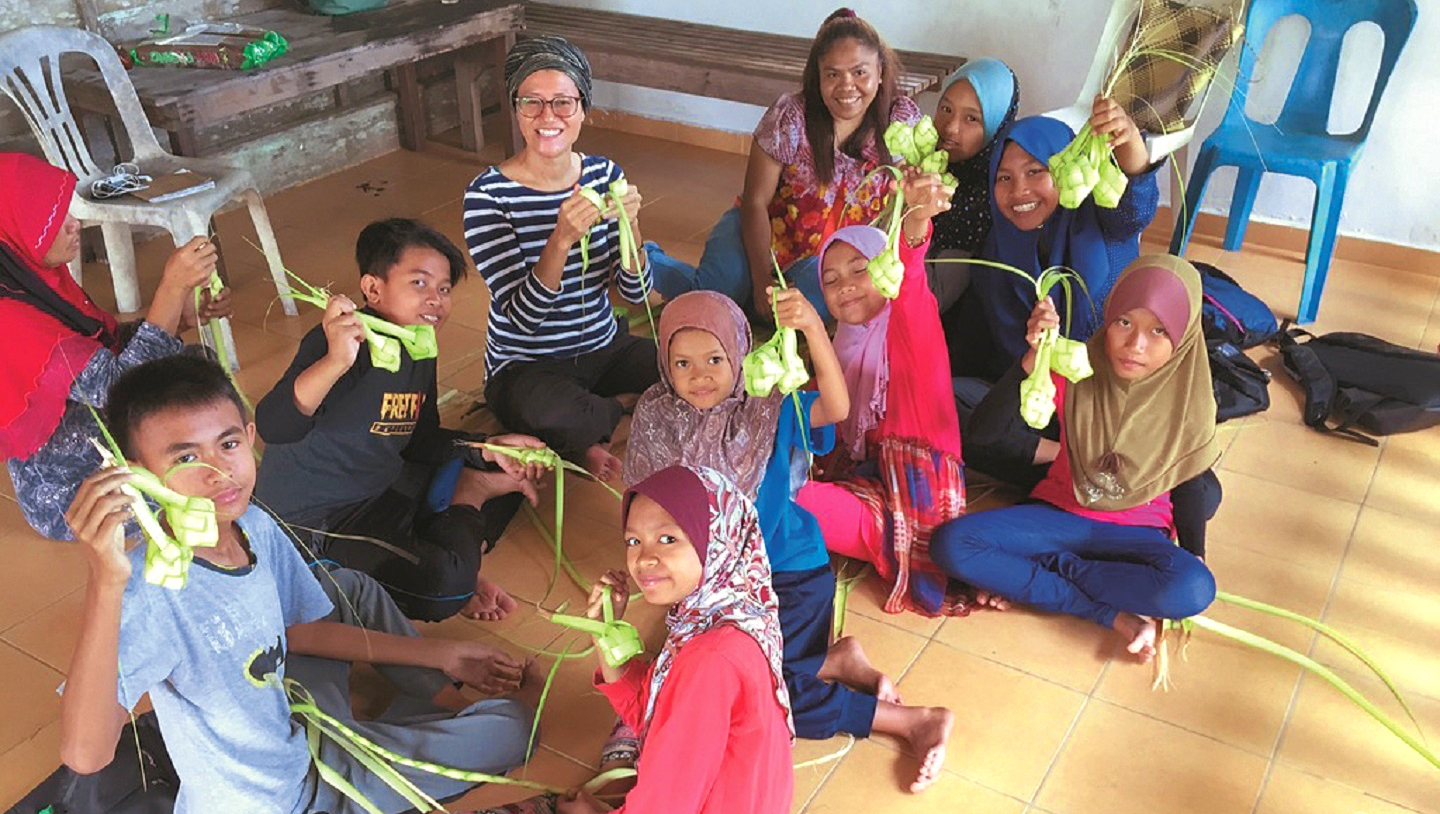
Jarina (centre) with children in Setiu who proudly hold up the ketupat parcels they have woven (All photos: Jarina Mohd Jani)
The ketupat, often used in Hari Raya card designs, is a mini parcel with manifold meaning. Wrapped within its folds is a unique heritage that is shared across the region. Add the aroma of coconut or fan palm leaves, from which the pouch is traditionally woven, and you get a healthier, tastier and more sustainable treat that, when served with satay or lontong, will have people say fondly, “I remember this”.
But for decades now, what is laid on many tables is ketupat boiled in plastic sachets — a convenient alternative that lacks the fragrance and beauty of the ketupat asli and only adds to plastic waste.
A group of ethnobotany students from Universiti Malaysia Terengganu (UMT) hopes to turn that around by encouraging homes not to serve so-called “ketupat plastik” this festive season. Led by senior lecturer Dr Jarina Mohd Jani, the team hopes to garner 100 pledges for its Wawasan Ketupat campaign, launched last month.
97947232_171636131148475_2113008868932976640_o.jpg
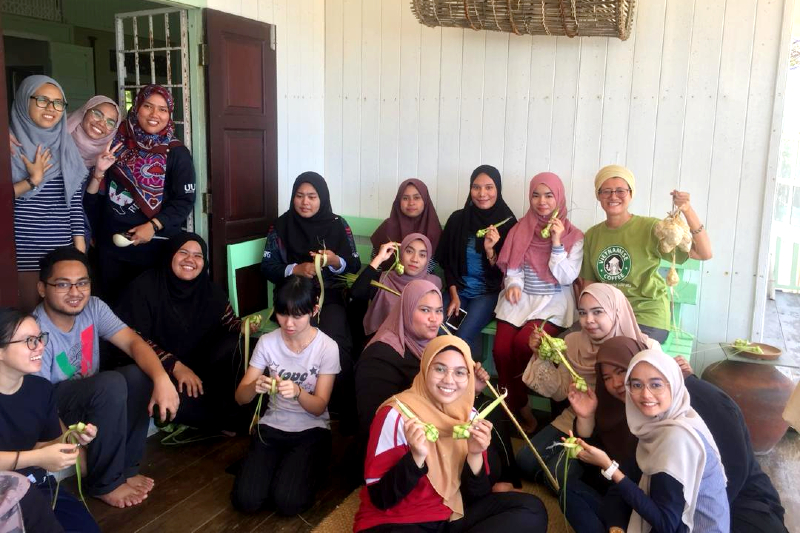
Jarina, who is with UMT’s faculty of science and marine environment, says there is little research on the origins of the ketupat but an academic paper from Indonesia suggests that serving ketupat is an Islamic-related practice introduced in central Java in the late 14th and 15th centuries.
“While that may be true for its strong link to Lebaran (or Raya), I personally theorise that weaving rice parcels is an Austronesian practice, judging from the diverse ketupat-making practices I have begun to find in the region since I started this ‘obsession’.”
Non-Muslim indigenous communities have traditionally made them too, and their designs are different from those in Java, she finds. “It was later branded as a practice for celebrating holy Muslim events such as the end of Ramadan and Prophet Muhammad’s birthday. As Indonesia is the largest Muslim nation in the world, the notion stuck.”
The local uniqueness, she adds, lies more in how ketupat is never eaten on its own. In Malaysia, it accompanies a favourite dish, such as rendang, lontong, satay or soto.
Jarina, who has “only started to gingerly do desktop research”, counts almost 20 ketupat designs just from Malaysia and Indonesia. The creativity of weavers allows for design variations, often to suit the purpose of its preparation.
In Southeast Asia, where leaves from different species of palm are used, a plethora of ketupat parcel designs can be found, from complex shapes of animals such as fish, horse and turtle — you need to have a space in the centre for the rice — for ketupat served at ceremonies or special events, to the elegant, geometrical ones eaten at home.
5_ketupat_designs.png
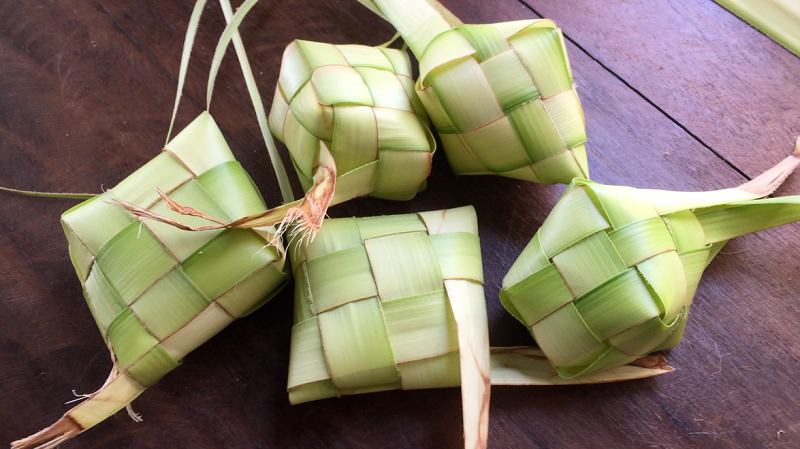
“As a dish prepared usually during gatherings and celebrations, probably for the simple reason of easier food distribution and storage, weaving ketupat is a communal activity. It binds families and communities as they sit and chat while weaving uninterrupted. The young are taught to weave by their elders, and the invaluable intergenerational transfer of culture is made.
“In short, the ketupat’s uniqueness lies in what it represents: sustainable use of natural resources, iconic interpretation of local culture that creates regional diversity, and a social glue that keeps people together.”
While the UMT campaign hopes to help preserve this sociocultural element, its other focus is the environment. Preparing food using local plants is a sustainable practice as they continue to survive, says Jarina, who has always avoided ketupat wrapped in plastic because of the potential risks in using the material. Besides, plastic lacks aroma, taste and character, she adds.
Boil-in-the-bag rice has been around since the 1960s, when it was introduced in the US, where it is regulated by the Food and Drug Administration’s strict guidelines as plastic leachate in food is a huge concern there. Testing is done to ensure only safe types of plastics are used.
But ketupat plastik, in the market since the late 1990s, has to be boiled much longer, until the grains break down and form a compact “rice cake”. The degree of exposure to heat is the difference, Jarina thinks, although little research has been done on this. A 2017 study by the Consumers Association of Penang claims the results show potential chemical transfer to the rice from the plastic sachets after boiling.
90231854_105944107717678_5899023279091351552_o.jpg
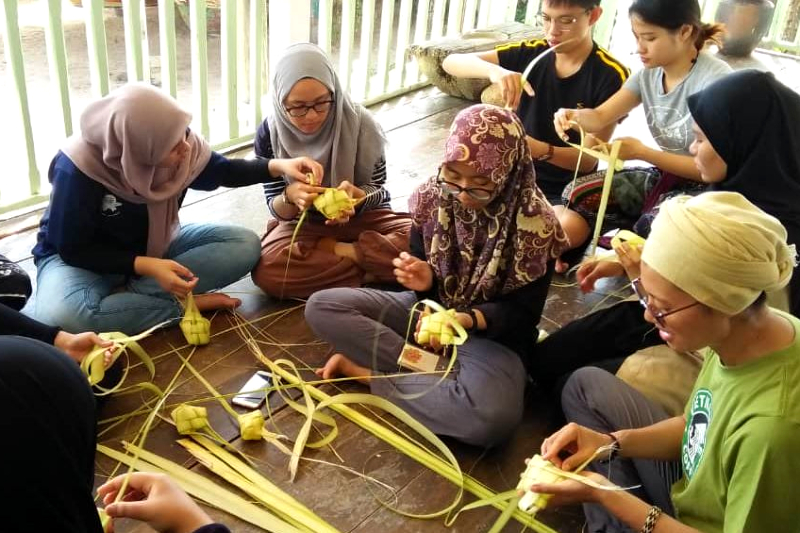
Originally, Jarina’s students planned to go around the country and conduct workshops to help people weave ketupat and share the significance of preserving the tradition. They even had an invitation from the Mersing mayor to do a ketupat weekend party in the town on April 9.
But Covid-19 and the Movement Control Order put paid to those plans, so they moved the campaign online via a Facebook page, which they now run. They have also developed a video tutorial on how to make five designs: ketupat pasar, ketupat bawang and ketupat satay, as well as two Jarina picked up from Flores, Indonesia — ketupat susu kambing and ketupat jantung.
The aim of collecting 100 pledges is to nudge her students to get people they know as well as strangers to say yes to plastic-free ketupat this Raya and share how to weave it.
“One hundred homes is a good number, just to spark interest. I believe in starting small but meaningfully. We hope people will spread the word and, who knows, we may get a revival of the ketupat asli in Malaysia.”
Plastic ketupat is cheap and readily available almost everywhere, laments Jarina. You just need to pop it in boiling water and, voila! These factors combined have added to the loss of traditional knowledge in weaving the parcels, even among her mother’s generation, who might have learnt it from young but do not make it a practice.
Many from her generation that represent the new city-dwelling population may have never even seen how it is done. She recalls that the ketupat would be ready and hanging by the time they arrived at her grandparents’ home in Negeri Sembilan every Raya. When open houses became a trend in the city, her mother made nasi himpit, which did not require any weaving!
ketupat_designs.jpg
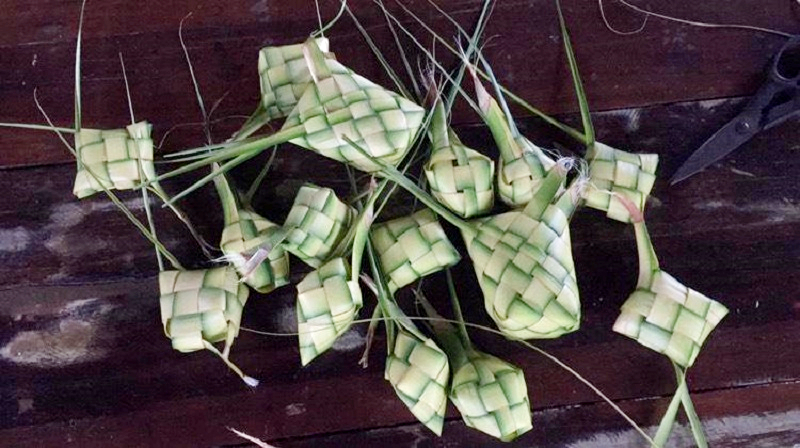
It was her trip home to celebrate Raya in Selangor last year that sparked Kuala Terengganu-based Jarina’s ketupat obsession. “Mum didn’t mention cooking lontong — my comfort food and her signature dish. When we arrived, she asked, ‘Where’s your ketupat?’” Jarina’s helper usually makes them, but she had not brought any.
Jarina, who had learnt to weave the parcels from her maternal grandmother but forgotten how, made her sister sit down with her to watch a how-to video. They found it hard to follow. The idea for Wawasan Ketupat was born then.
“People assume it is difficult to weave ketupat but it’s not. It is fun and good for children too — this is like a game that promotes motor skills.”
Jarina has taught children in Setiu, Terengganu, to weave under an art and culture programme with her watercolourist husband, Chang Fee Ming. “They were so focused and curious. We had boiled the ketupat for them to see and said, ‘Look, this is what we’re going to do’. You can show them it’s something good to do for the culture and environment.”
She noticed how the ability to weave ketupat changed her students, who say they “feel more Malay for being able to do something that belongs to their culture”. As for her, she felt empowered after making her first ketupat because of the “connection” she had with weavers from the Setiu Wetlands who use the kercut, nipah and pandan laut to make handicrafts — women she works with under her wild plant resource utilisation programme.
“My intention [for Wawasan Ketupat] is also to increase awareness among ‘modern societies’ of how much we owe plants in achieving progress, the benefits we have gained from using them and how plant species also benefited from our utilisation, how connected we all still are with plants and that it should continue to be so.”
Jarina reckons paying 20 sen for a young coconut leaf and 50 to 60 sen per woven parcel in the Klang Valley is not too much for a special Hari Raya treat, compared with the cookies and soft drinks people buy. Weaving takes time, no doubt, but toiling to prepare unique items is part of the festive celebration, she believes.
“People may have some difficulty obtaining coconut or fan palm leaves, but it is not impossible. I believe if there is a healthy market, traders will make them available. And if consumers insist on real ketupat, sellers will not serve the plastic ones. Hence this campaign.”
This article first appeared on May 18, 2020 in The Edge Malaysia.


